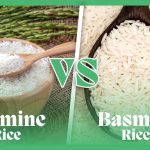The coldest regions of the North Atlantic and Northern Pacific oceans, where the water temperature is consistently below 4°C, are home to the snow crab, thus its namesake. The crab’s shell is orange, light brown, or red, and it has a tiny body with long, slender legs. Not only do snow crab legs have a luscious taste that has gripped the culinary world, but their appeal as a delicious seafood alternative has risen.
Moving on to the dietary front, these delicious crabs have several health advantages. A quick rundown demonstrates how popular snow crab legs are among everyone from seafood connoisseurs to everyday eaters. Let’s explore the nutritional profile, revealing the protein-rich quality, low-calorie content, and key elements that turn snow crab legs into a culinary sensation on your plate.
This article will help you to be able to understand the nutritional information and why treating yourself to these delicious crabs may be a healthy decision. Let’s discover the nutritional ingredients that make snow crab legs more than simply a tasty treat—they also contribute to general well-being. Come experience the delicious world of snow crab legs.

Nutritional composition of snow crab legs:
Snow crab legs are a healthy complement to a balanced diet and a gastronomic treat due to their exceptional nutritional profile, which offers the ideal mix of nutrients.
Protein:
Let’s speak about protein first. These delicious crustaceans are a great source of high-quality protein, which is essential for the maintenance of healthy muscles and general bodily functions. About 16 grams of protein can be found in a 3-ounce portion of snow crab legs, making them a great option for anybody trying to satisfy their protein requirements.
Carbohydrates:
Snow crab legs have a very low carbohydrate content that has almost no effect on blood sugar levels. This makes them a good choice for people on ketogenic or low-carb diets.
Fats:
Snow crab legs are extremely thin and have very little fat on them. This feature not only adds to their general health but also makes them a great option for people who are managing their fat consumption.
Micronutrients:
The nutritional content of snow crab legs is substantial, with an outstanding macronutrient composition. Let’s talk about micronutrients: snow crab legs are a great source of important vitamins and minerals.
Vitamin B 12:
Snow crab legs are a great source of vitamin B12, which is essential for red blood cell synthesis and neurological function. Over 160% of the necessary daily dose of vitamin B12 may be obtained from a 3-ounce serving.
Zinc and Selenium:
These delicious crustaceans are also a good source of nutrients, including zinc and selenium. Zinc is essential for immunological response and wound healing, and selenium is a potent antioxidant that protects cells from harm.
Role in human nutrition:
In addition to being a delectable culinary delight, snow crab legs provide a host of remarkable health advantages that enhance general well-being. Now let’s explore these advantages:
Aid in muscle development:
The high-quality protein found in snow crab legs is vital for muscle development, repair, and general bodily functions. Sustaining weight control, encouraging satiety, and preserving muscle mass all depend on getting enough protein in the diet. Eating foods high in protein, such as snow crab legs, may help you achieve your daily protein needs and maintain a balanced way of life.
Helps to maintain weight:
Snow crab legs have a deep flavour, but they are surprisingly low in fat and calories, which makes them a healthy choice for anyone trying to keep their weight in check. Because of their minimal fat and calorie content, you may indulge guilt-free in their wonderful flavour without having to worry about consuming too many calories.
Sustains general health:
Legs of snow crabs are an excellent source of important vitamins and minerals that are necessary for sustaining general health. They have a very high concentration of vitamin B12, which is essential for the production of red blood cells, DNA synthesis, and nerve function. (1)
Improves thyroid functioning:
Significant concentrations of minerals including zinc and selenium, which are necessary for thyroid health, antioxidant protection, and immune system performance, are also found in snow crab legs.
Heart health:
Your heart health may benefit from including snow crab legs in your diet. Their high omega-3 fatty acid content together with minimal fat content can help lower LDL (bad) cholesterol levels and minimize the risk of cardiovascular illnesses. In addition to their ability to lower blood pressure and have anti-inflammatory qualities, omega-3 fatty acids also promote heart health.
Boost brain function:
The heart and brain function can both benefit from the omega-3 fatty acids included in snow crab legs. These fats—EPA and DHA in particular—are essential for mood control, memory retention, and cognitive function. Frequent ingestion of foods high in omega-3 fatty acids, such as snow crab legs, may help enhance brain function and lower the risk of age-related cognitive decline. (3)
Helps in prenatal growth and development:
A delicious seafood delicacy that offers substantial nutritional advantages, snow crab is a great addition to a pregnant woman’s diet. Its special blend of nutrients, which includes omega-3 fatty acids and vitamin B12, is essential for maintaining both the mother’s health and the development of the fetus’s brain throughout pregnancy. Sufficient amounts of B12 in the mother’s diet promote healthy neurological development and help avoid neural tube abnormalities.
Omega-3 fatty acids, especially EPA and DHA, are abundant in snow crab and are critical for the development of the fetus’s brain and sharp vision. Snow crabs provide high-quality protein, which is crucial for the growth and development of the newborn. Vitamins, zinc, copper, and selenium are other vital minerals.
Cooking methods:
Snow crab legs require careful handling to maintain their superb flavour and subtle texture. Boiling, steaming, or grilling are three common cooking techniques that provide a variety of choices to suit different palates and enhance the eating experience with the rich taste of snow crab legs.
Boiling:
One of the easiest and fastest ways to prepare snow crab legs is to boil them. First, bring a big pot of water to a rolling boil to prepare the crab legs. To give the crab flesh more flavour, add salt and other ingredients to the water, such as garlic, lemon slices, or bay leaves. The cooking time for crab legs varies based on their size, so carefully drop them into the boiling water and cook for around 5-8 minutes.
Boiling is a great choice for people who want a simple cooking method and helps preserve the natural sweetness of the crab meat. Snow crab legs that have been boiled maintain much of their vitamin and mineral content, including selenium, zinc, and B12, although they may lose some of their water-soluble elements.
Grilling:
Snow crab legs take on a distinctive flavour and take on a smoky, somewhat burnt taste when grilled. Apply melted butter or a tasty marinade to the crab legs first. Place the crab legs directly on the grill grates and preheat the grill to medium-high heat. Grill for four to six minutes, rotating once or twice to make sure everything cooks evenly.
The crab legs have a lovely smokiness from grilling that accentuates their inherent delicacy. For those who want a little smokey complexity with their seafood, this is the way to go. Due to heat exposure, grilling can reduce nutritional content; however, marinades and good fats, such as olive oil, can improve nutritional value and provide a smokey taste.
Steaming:
Another well-liked way to cook snow crab legs is steaming, which keeps their delicate texture and keeps them from getting soggy. Place a steamer basket over a saucepan of boiling water to steam crab legs. For extra flavour, sprinkle some herbs, spices, or lemon slices over the crab legs.
After adding the crab legs to the steamer basket, cover it and let it steam for six to ten minutes. Steaming keeps the crab flesh wet and succulent by allowing it to cook slowly. For people who like a lighter touch while cooking fish, this is the perfect way. Snow crab legs are minimal in calories and fat because steaming retains their natural aromas and nutrients. It’s a healthy cooking method.
Considering snow crab legs for special diets:
Paleo diet:
Snow crab legs are a good option to incorporate in the paleo diet as they are a wonderful source of protein and important elements that don’t come with processed chemicals.
Keto diet:
Snow crab legs fit the bill for a ketogenic diet because of their low carbohydrate content. The fact that they go well with healthy fats like butter or olive oil makes them even more keto-friendly.
A comparison of the nutritional profiles of several seafood options:
Fish:
Depending on the kind, fish can have high omega-3 fatty acid content.
Omega-3s are present in snow crab legs but in lesser concentrations. They do, however, have a distinct flavour and texture.

Lobster:
Compared to the legs of snow crabs, lobster is a lean protein source that has a somewhat greater calorie content.
While they both offer vital minerals, snow crab legs could taste nicer.

Shrimp:
Shrimp is an excellent source of protein and low in calories.
Legs of snow crabs have higher concentrations of several vitamins and minerals, such as selenium.

Purchasing and storing tips:
Choose premium snow crab legs that are completely developed, undamaged, and have a bright, clear shell. Within one to two days of purchase, store them in the coldest section of the refrigerator, below 32°F (0°C). If not using right away, think about freezing, making sure to package well to avoid freezer burn.
When eaten in moderation, snow crab legs are a tasty and healthy supplement to a balanced diet. As a lean protein source, they offer a healthful substitute for red meats that are heavy in saturated fat. Omega-3 fatty acids, which are vital for heart and brain health, are found in crab flesh. A nutrient-rich dinner is produced when crab legs are served with vibrant veggies. Because they are low in calories, snow crab legs can help with weight management.
When introducing snow crab legs into a diet, there are a few nutritional considerations to take into account. Crab meat naturally contains sodium, however some cooking techniques or commercially prepared crab items could add more salt. Crab legs should be consumed with caution by those who are allergic to shellfish. Concerns about cholesterol should also be taken into account. Lean meats, poultry, and plant-based foods should be included in a well-balanced diet, and moderate crab leg consumption may also be beneficial.
In conclusion, discovering the culinary possibilities of snow crab legs gives a multitude of nutritious advantages in addition to tantalizing taste sensations. Crab legs are a flexible addition to any kitchen, whether boiled or grilled. The luscious sweetness of the former is particularly pleasing.
Snow crab legs are a delight on the table, whether you’re eating them as part of a well-balanced seafood medley or in a salad that’s high in protein. Always remember that moderation is crucial. If you have any dietary restrictions, speak with your healthcare professional to make sure that these delicious treats complement your wellness regimen.
References:
- https://ods.od.nih.gov/factsheets/VitaminB12-HealthProfessional/
- https://www.hsph.harvard.edu/nutritionsource/what-should-you-eat/fats-and-cholesterol/types-of-fat/omega-3-fats/










Asking questions are truly nice thing if you are not understanding anything totally, except this post offers
nice understanding even.
Very interesting info!Perfect just what I was looking for!.